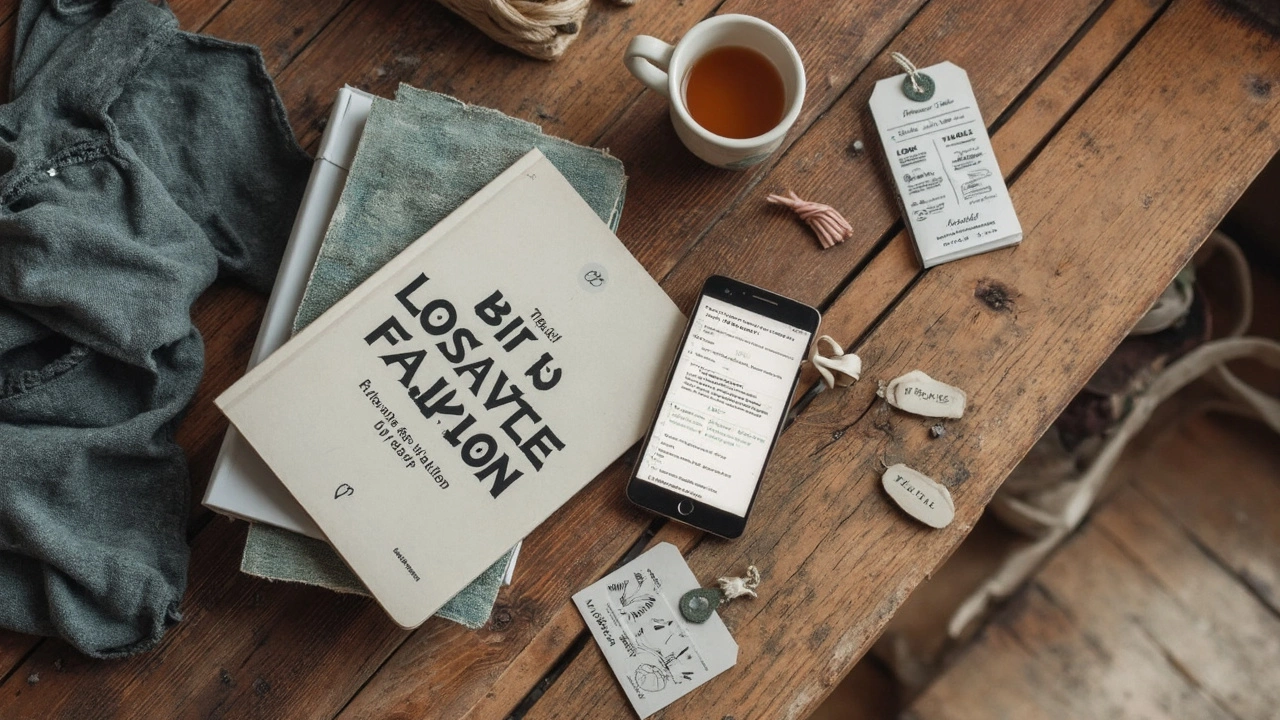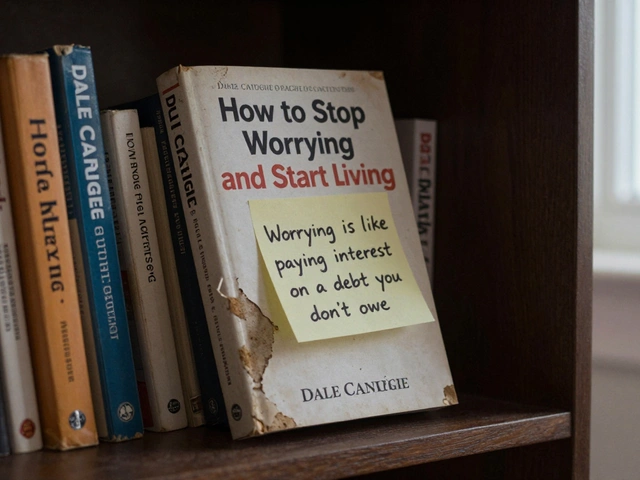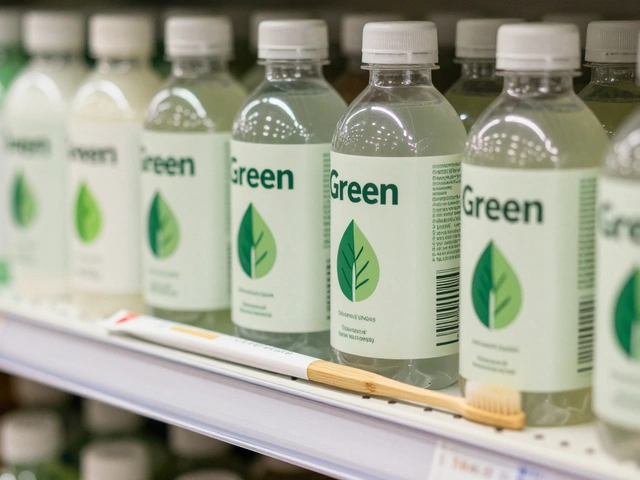Sustainable fashion theory isn't just about wearing a few eco-friendly outfits—it’s the bigger idea behind choosing clothes that do less harm to the planet and the people making them. If you’ve ever wondered why fast fashion gets a bad rap or what actually makes a brand ‘sustainable,’ this is what the theory tackles. It’s a way of looking at the entire life cycle of clothes, from raw materials and labor to where they end up once you stop wearing them.
The average person throws out around 37 kg (about 81 pounds) of clothes every year, and less than 1% gets truly recycled. That’s mind-blowing, right? Sustainable fashion theory sorts out what needs to change in this broken system. It dives into the ethics of fair wages, the environmental impact of dyeing and shipping, and even how trends influence overconsumption. It’s like having a mental checklist for every clothing choice you make.
If you love fashion but hate the guilt trip every time you learn about sweatshops or microplastics in the ocean, this theory gives you real frameworks and tips to make sense of it all. You don’t have to go full minimalist or swap out your closet overnight. Even small steps—like choosing better fabrics or skipping impulse buys—fit into this bigger idea. We’ll break it all down so you know exactly what sustainable fashion theory means for your own closet and the wider world.
- Breaking Down Sustainable Fashion Theory
- The Roots: Where Did It Start?
- Spotting Greenwashing vs. Real Action
- Making Smart, Sustainable Choices
- Why It All Matters Now
Breaking Down Sustainable Fashion Theory
If you’re trying to get what sustainable fashion theory really means, imagine it as the why, what, and how behind making clothes with less harm, more fairness, and smarter choices. It’s not a single rulebook but a mix of ideas that look at everything: from the cotton field to your laundry room, and then to the landfill.
The basics all start with resources. A regular cotton T-shirt can take about 2,700 liters of water to produce—enough for one person to drink for over two years. Sustainable fashion theory says this is too much. It asks brands and shoppers to look for alternatives like organic cotton, hemp, or even recycled materials that use much less water and chemicals.
But that’s just step one. The theory zooms in on people, too. Are garment workers paid living wages? Are factories safe? The aim isn’t just making eco-friendly clothing—it’s about ethics the whole way through. It calls out sweatshop labor and encourages us to look for brands that are fair and open about how they treat workers.
Then there’s the massive waste issue. Every year, the world piles up enough textile waste to fill Sydney Harbour. The theory sides with brands that design for longer life or use recycled fabrics. You’ll see pushes for capsule wardrobes and repair services—anything to slow down the throwaway culture.
It also pays attention to how trends fuel overconsumption. Fast fashion drops hundreds of new items weekly, making it easy to buy more than we need. Sustainable fashion theory encourages us to buy less, prioritize quality, and skip trends that last only a season. Here’s a quick cheat sheet to spot the difference:
- Look for certifications like GOTS or Fair Trade.
- Check if a brand lists exactly where their clothes are made.
- Choose materials that are organic, recycled, or biodegradable.
- Support slow fashion—buying fewer, better things.
- Ask yourself: Will I wear it 30 times?
Most important, the theory says that you—yes, you—hold a lot of power. The industry changes when shoppers ask questions or spend their money with sustainable fashion brands. Every shift, big or small, is a step toward fixing a system that’s broken on so many levels.
The Roots: Where Did It Start?
You might think sustainable fashion is brand new, but the roots go a lot deeper than trendy buzzwords. The big push for eco-friendly and ethical fashion really kicked off in the early 1990s, even though people have worried about clothing waste for far longer. Green movements, environmental protests, and exposés about factory working conditions put the spotlight on just how badly the industry treats both the planet and workers.
One massive wake-up call was the 2013 Rana Plaza disaster in Bangladesh, where a factory collapse killed over 1,100 garment workers. The tragedy forced companies and customers to admit that cheap clothing often comes at a very high human cost. Suddenly, ethical and sustainable fashion wasn’t just for activists or hippies—it was a mainstream concern.
Before that, awareness spread in waves. Patagonia was one of the first major brands to experiment with recycled materials all the way back in the 1990s. Meanwhile, the concept of "slow fashion" started to gain traction as an answer to fast fashion’s throwaway culture. This meant choosing quality and transparency over the constant churn of new, cheap trends.
Here’s a look at some milestone years and facts that shaped the sustainable fashion movement:
| Year | Milestone |
|---|---|
| 1991 | Patagonia launches recycled fleece, a big move towards eco-friendly clothing. |
| 2007 | Fashion Revolution movement gains traction, pushing brands for transparency after factory disasters. |
| 2013 | Rana Plaza collapse brings ethical issues to the world’s attention. |
| 2015 | UN launches the Sustainable Development Goals, including targets for responsible production and consumption. |
What’s really changed is how open information is now. With documentaries, social media whistleblowers, and even brand transparency apps, anyone can check if a label lives up to its sustainability promises. This history explains why eco-friendly clothing is more than a trend—it’s about rethinking the whole industry so you don’t have to choose between looking good and doing good.

Spotting Greenwashing vs. Real Action
Greenwashing is everywhere in the sustainable fashion world, and it’s honestly confusing. Brands throw around buzzwords like "eco-friendly," "green," and "conscious," but a fancy tag doesn't mean a piece of clothing is actually making a real difference. In 2023, a UK watchdog found that nearly 60% of 'green' clothing claims from big retailers were either misleading or totally unproven. So, how do you tell the difference?
Start by checking for real proof. If a brand says it's using organic cotton, is there an actual certification? Look for legit labels like GOTS (Global Organic Textile Standard), Fair Trade, or OEKO-TEX. These aren't just stickers; they're third-party checks that the brand followed sustainable and ethical standards during production.
Read the details, not just the headlines. Saying "sustainable collection" on ten T-shirts out of thousands isn’t game-changing. True eco-friendly clothing brands share:
- Exact materials used for every product
- Details about their factories and worker treatment
- Recycling programs or take-back initiatives
- Yearly impact reports or updates, not just vague promises
Another trick? See if the brand focuses on low-impact production or just on recycled packaging. While recycled packaging helps, most damage happens during fiber production, dyeing, and sewing. If a brand isn’t talking about those steps, that’s a red flag.
| Feature Claimed | Greenwashing Sign | Real Action |
|---|---|---|
| "Organic" fabrics | No certs, no supply chain info | Certified organic, full supply chain traceability |
| "Ethical labor" | Only pretty photos, no audits or numbers | Third-party labor audits, living wage statements |
| "Low-impact" | Only about packaging | Details on water use, emissions, chemicals, and end-of-life recycling |
If you get stuck, search for independent reviews or watchdog ratings. Sites like Good On You rate sustainable fashion brands for both social and environmental impact. Bottom line: real sustainable fashion doesn’t just talk – it proves it. Every time you shop, treat wild claims with healthy skepticism and demand specifics.
Making Smart, Sustainable Choices
Switching to sustainable fashion doesn’t mean you need to be a style saint or spend a fortune. It’s about small, smart tweaks to how you shop and care for your clothes. Here’s what really helps when you want your wardrobe to do less damage—and maybe even some good.
First, keep an eye out for materials like organic cotton, TENCEL™, recycled polyester, or hemp. The Higg Materials Sustainability Index puts regular cotton near the top for water use and pollution, while organic cotton uses 91% less water on average. That’s a huge difference! Not all "eco" fabrics are perfect, but reading labels and doing quick research pays off.
Next, check out who’s making your clothes. If a brand doesn’t share info about its factories or worker pay, that’s honestly a red flag. Legit sustainable fashion brands tend to be loud about their factories and certifications. Look for things like Fair Trade, GOTS (Global Organic Textile Standard), or B Corp certifications.
"Demand quality, not just in the products you buy, but in the life of the person who made it." — Orsola de Castro, Co-founder of Fashion Revolution
There’s also this overlooked trick: simply wearing what you have for longer. According to WRAP, extending the life of your clothes by nine months can reduce carbon, water, and waste footprints by up to 30%. That’s a win without spending a dime.
| Small Habit | Impact |
|---|---|
| Buy fewer items | Less waste, less pollution |
| Pick better fabrics | Lower resource use |
| Laundry care (cold wash, air dry) | Saves energy and extends clothing life |
| Repair instead of toss | Keeps clothing out of landfills |
Ethical fashion and green choices can actually feel pretty normal once you get the hang of it. Thrift shops, clothing swaps, and rental services count, too. And if you’re stuck between two items, asking yourself, “Will I wear this at least 30 times?” is a proven way to skip impulse buys. Your closet (and the planet) will thank you.

Why It All Matters Now
It's easy to ignore what goes on behind the price tag, but sustainable fashion is way bigger than picking organic cotton or skipping a shopping trip. Fashion is the second biggest polluter after oil. It’s responsible for up to 10% of global CO2 emissions—yep, more than all international flights and shipping combined. That means your favorite tee has a carbon footprint that’s not just about your laundry routine, but also the factory it came from, the shipping across oceans, and even how you toss it after a few months.
The cheap, fast clothing we see everywhere isn’t just affecting the planet. It also impacts people. Many garment workers—about 75 million worldwide—work in harsh, unsafe conditions for very low pay. In places like Bangladesh, the minimum wage for a factory worker can be less than $100 a month. This is where ethical fashion arguments really hit home. Supporting companies that actually give fair pay and safe conditions can make a bigger impact than you might think.
Waste is a beast, too. The world sends the equivalent of a dump truck of clothes to landfill every single second. Of all the apparel produced every year, only a tiny slice gets recycled or reused. The rest? It sits in landfills, leaks out fibers that end up in oceans as microplastics, or pollutes soil and water. Here’s a quick peek at how the numbers stack up:
| Issue | Fashion Industry Impact |
|---|---|
| Annual CO2 Emissions | ~1.2 billion tons |
| Water Used for 1 Pair of Jeans | ~7,500 liters (2,000 gallons) |
| Microplastic Pollution | 35% of all ocean microplastics |
| Clothing Sent to Landfills | ~73% of all clothing |
Buying less, opting for eco-friendly clothing, and rethinking how we care for our clothes really does chip away at these numbers. Here are a few things you can do now, no doom and gloom attached:
- Choose clothes made with recycled or natural fibers.
- Learn how to spot genuine sustainable claims (not just buzzwords).
- Launder less often and at lower temperatures to cut your personal footprint.
- Repair, swap, or resell instead of tossing out clothes.
- Support brands with transparent supply chains and fair labor standards.
Every time you make a thoughtful choice, you’re voting for a fashion industry that’s cleaner, fairer, and kinder to the people in it. That’s why sustainable fashion and everything connected to the theory matter so much right now—and not just for people who love shopping, but honestly, for everyone.










